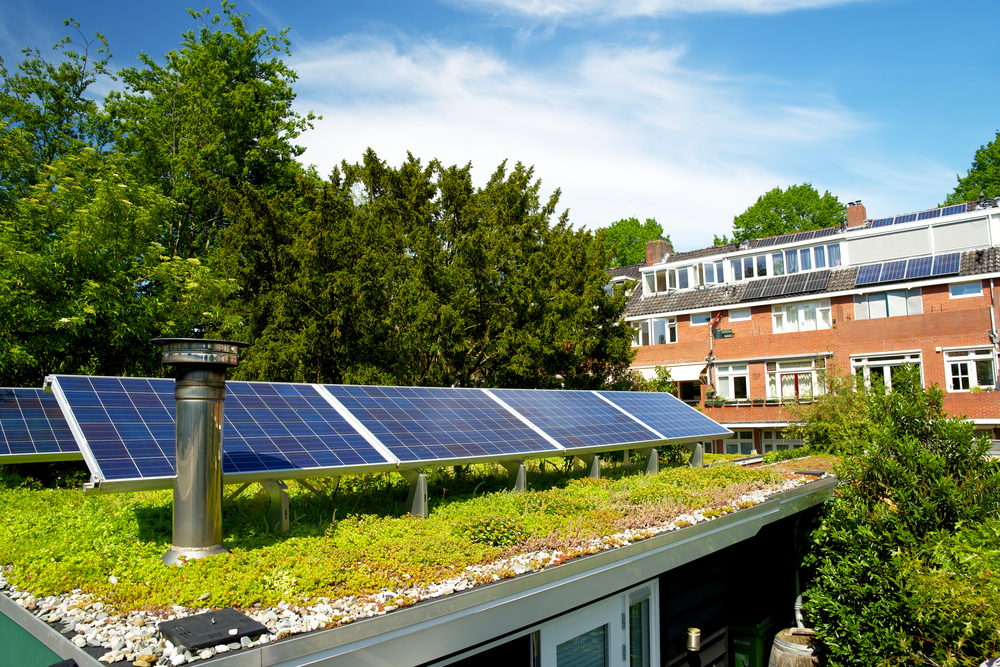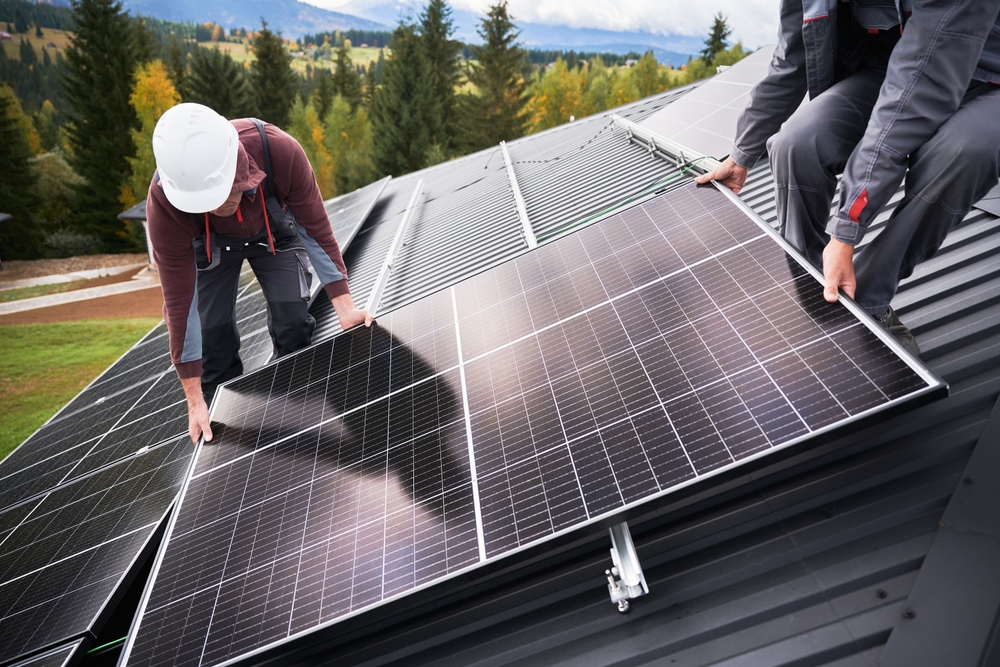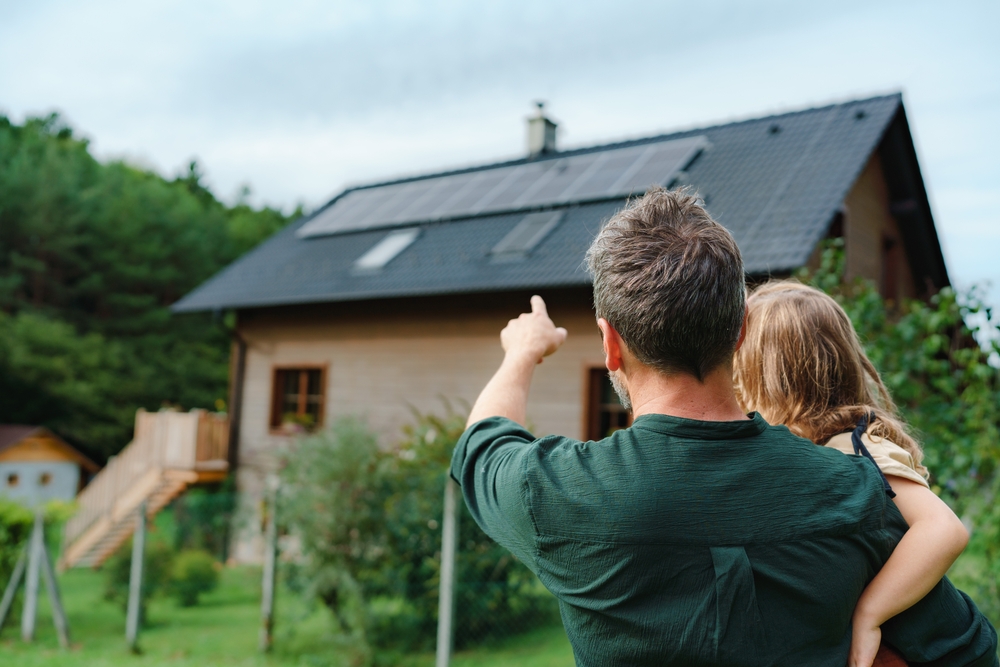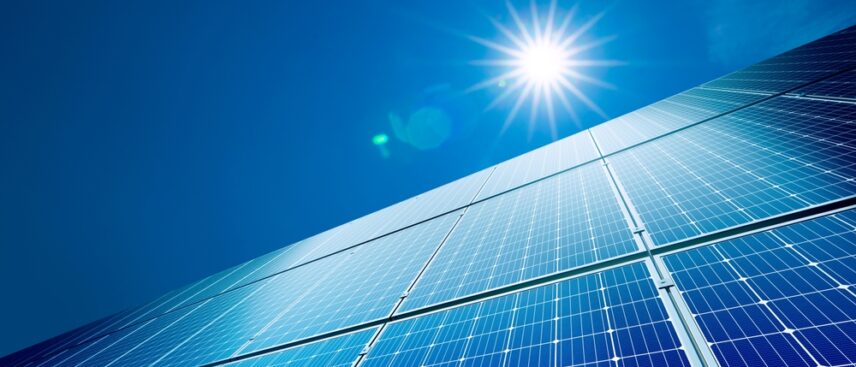Sustainability is increasingly becoming a concern, so it’s no surprise that countless homeowners are turning to solar power as a renewable energy solution. It’s an integral part of a cleaner, greener future. After all, it allows you to harness the sun’s immense energy and convert it into electricity to run your freezer, microwave, and so much more.
If you’re considering the merits of going solar, you’ll have two main options: solar shingles and traditional solar panels. While they use the same tech, they’re not the same product. Each has unique perks, so you might find one better suited to your needs.
Understanding Solar Technology
Solar panels and shingles use photovoltaic (PV) cells to convert sunlight into electricity you can use in your home. Each cell, which is a singular PV device, can produce about one to two watts of power. They’re incredibly thin (usually less than the thickness of four human hairs), so they’re flanked by layers of protective materials, like glass or plastic, to ensure they can handle whatever Mother Nature throws at them.

Each PV cell’s semiconductor materials are connected in chains, creating bigger units marketed as modules or panels. If you need more power output than a single module or panel offers, you can connect those, too, to create a larger array that you can customize to suit your power needs. This adaptability puts you in control of your energy consumption.
These arrays capture the sunshine streaming down onto your home, sending it into an inverter that converts it into usable household energy. In simple terms, this transformation happens when solar energy frees electrons in those semiconductors, inducing them to travel through an electrical circuit. This results in power that you can use to power your hair dryer, refrigerator, or TV.
Both solar panels and shingles harness the sun’s energy in similar ways. The main difference is the structure: while solar panels are large arrays that sit atop your roof, solar shingles are integrated directly into your roof structure.
Traditional Solar Panels
Most people think of solar panels when they think of solar energy. These panels are usually made of silicon wafers wrapped in a weatherproof frame. That frame is typically mounted on a racking system, which allows it to sit securely on your roof.
The frame keeps the solar panels from sitting directly on your roof, creating a raised profile above the roof surface. During the installation process, your contractor will usually drill holes in your roof. They’ll use those holes to securely affix the frame and the panels atop it to your roof.
Solar Shingles
Solar shingles are a newer option on the solar scene. Unlike solar panels, this option is beautifully integrated into your roof. The shingles are designed to resemble traditional roof shingles, so they’re a perfect fit for people who hate the raised look of clunky panels.
They’re usually made with integrated solar cells and installed directly onto the roof deck instead of atop an existing roof. They replace conventional shingles, creating a sleeker, more integrated appearance. This way, you get the best of both worlds: the aesthetics of roofing shingles (no obtrusive panels to be seen) and the benefits of a roof that can produce electricity for your home.
The installation process can vary, just like it does with regular ‘ol roofing shingles. Some solar roofs require adhesives, and others require interlocking mechanisms. It all depends on the specifics of the solar shingles you choose.
Side-by-Side Comparison: Solar Panels vs. Shingles
Deciding between solar panels and shingles can be tricky — there are all sorts of factors to consider! Knowing the definitive differences between the two might help you decide which way you’re leaning:
| Factor | Solar Panels | Solar Shingles |
| Aesthetics | Raised profile, more clearly visible on your roof | Seamless, integrated appearance |
| Efficiency | More efficient* | Less efficient* |
| Cost | Lower | Higher |
| Installation | Often quicker and less expensive due to established methods | More complex, may require specialized training or certified installers |
| Maintenance | Minimal, although cleaning may be easier due to the raised profile | Minimal |
| Durability | 20-30 years | 20-30 years |
| Warranty | 25 years** | 25 years** |
*Depends on the panels or shingles you choose. Efficiency may vary.
**Warranty coverage and type varies based on the product and manufacturer
Solar Panels vs. Shingles?

If you’re still on the fence between solar panels and shingles, you’re not alone. It’s a tough choice! Here are a few more things to keep in mind as you debate the merits of each option:
Budget
Going solar isn’t cheap. On average, homeowners pay between $15,000 and $22,500 (before incentives and rebates). However, that cost can vary dramatically based on choosing panels or shingles.
For the most part, shingles are pricier than panels. They’re a newer technology, whereas solar panels (as we know them today) have been around for decades. So, if you opt for shingles, you’ll probably pay a higher upfront cost. Before choosing, evaluate your budget and long-term energy savings potential. This way, you can establish what you’re willing to spend and what you expect before you even start shopping.
Roof Suitability
Not all roofs are compatible with solar. If your roof is heavily shaded or doesn’t get much sunshine for various reasons, solar might not be a good fit. For example, you might have massive trees flanking your home that cast a shadow on the house most of the day. If that’s the case, you might need to reevaluate your solar goals.
If your roof gets plenty of sun, you may still encounter issues, especially if your roof has a complex layout. Solar shingles might not work for complicated roof shapes, so you might have to consider panels instead. If you have no idea whether solar will work for your home (or which type will work best), chat with a qualified solar installer. They can look at your roof and assess what would work best for your solar goals.
Aesthetics
Consider how you feel about solar panels versus shingles in terms of appearance. Do you mind the raised, clearly visible look of solar panels? If so, they might be a good option. However, solar shingles might be a better fit if you despise the obvious appearance. They offer a more seamless look, so they might be more appealing to your aesthetic preferences.
Local Incentives and Regulations
Ask your solar provider about local solar regulations. Sometimes, there might be incentives or requirements that may help you decide on one or the other. Those incentives might only be available for solar panels or vice versa, while the requirements might decide for you.
If there are incentives available in your area, you might be able to get a killer deal on your new solar system. At the time of writing, the Investment Tax Credit (ITC) is available for new solar PV systems. It offers a 30% tax credit for systems installed between 2022 and 2032.
In addition to that credit, you might also find options available through local utility or municipality programs. These can vary based on location, though, so it’s not a given for new solar energy systems.
Getting Started with Solar Power

If you’re excited to get started with solar power for your home, contact a couple of reputable solar installers in your area. Chat with them about your specific solar needs and goals. They’ll take a look at your roof to help you settle on a solar type and will usually provide detailed quotes to give you a better idea of what costs to expect.
If they confirm that either solar type will work for your home and you’re still undecided, learn more about each option using reputable resources like Energy.gov or NREL.gov. These sources offer a wealth of information that can help you decide one way or the other.
Solar power is such a fascinating energy source. It’s an excellent tool that can help you reduce your reliance on conventional energy sources and invest in a more sustainable tomorrow. It has a bright future, so why not make it part of yours?
